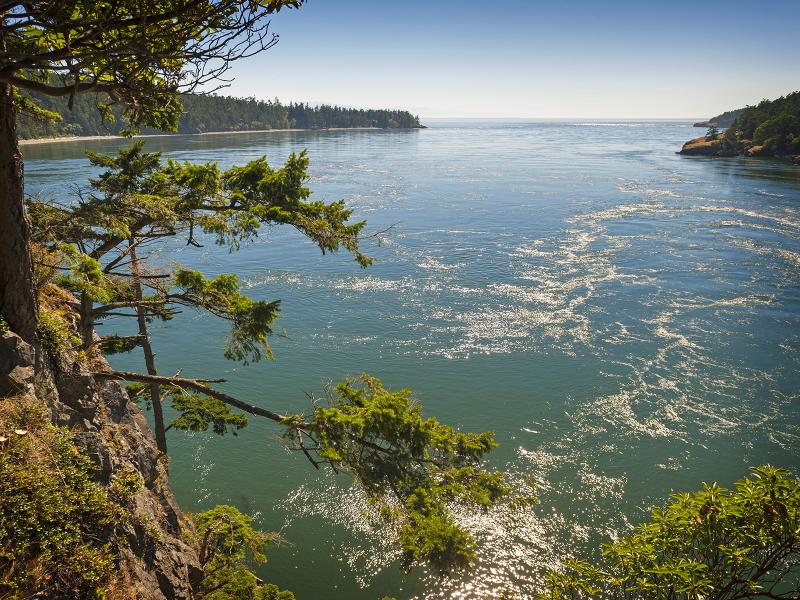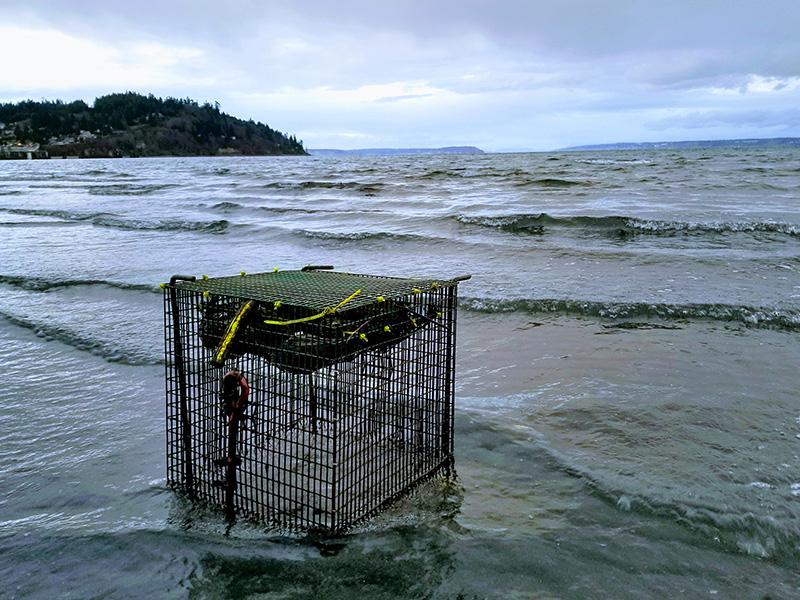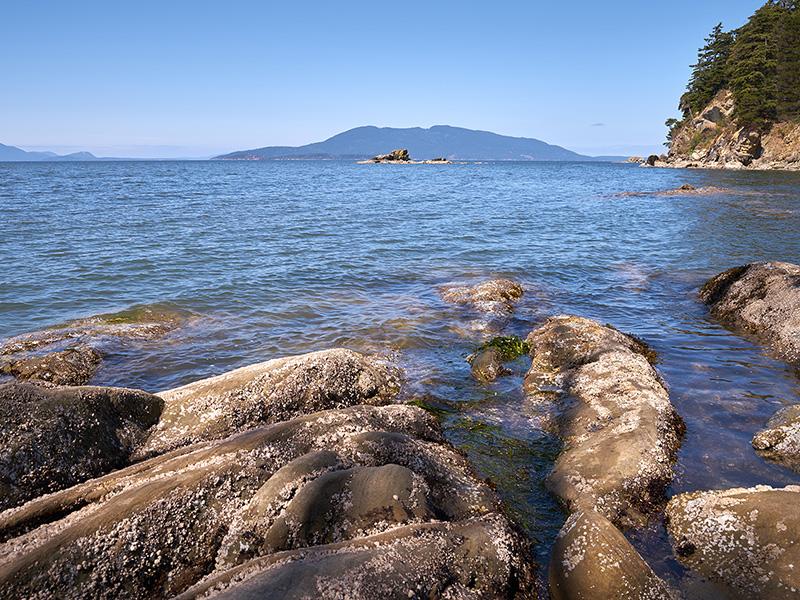
News & Publications
Salish Sea Model in the News
Public Release of PNNL’s Ocean Biogeochemical Modeling Software
Tracking Toxics in the Salish Sea
Modeling the Future of a Sea
Journal Publications
Premathilake, L., Khangaonkar, T., West, J., O’Neill, S., Harding, L., James, C. A., … & Bogue, K. (2025). Integrated modeling framework (FVCOM-ICM/Toxi) to simulate the fate and transport of polychlorinated biphenyls in urban estuaries–Case study for Puget Sound, WA. Ecological Modelling, 500, 110959. https://doi.org/10.1016/j.ecolmodel.2024.110959
Khangaonkar, T.P., Carter, B.R., Premathilake, M.R., Yun, S., Ni, W., Stoll, M., Ward, N.D., Hemery, L.G., Sanchez, C.T., Subban, C.V., Ringham, M.C., Eisaman, M.D., Pellman, T., Tallam, K., and Feeley, R. (2024). Mixing and dilution controls on marine CO2 removal using alkalinity enhancement. Environ. Res. Lett. 19:104039. https://doi:10.1088/1748-9326/ad7521
Gierke, L., Coelho, N.C., Khangaonkar, T., Mumford, T. and Alberto, F. (2023) Range wide genetic differentiation in the bull kelp Nereocystis luetkeana with a seascape genetic focus on the Salish Sea. Front. Mar. Sci. 10:1275905. https://doi:10.3389/fmars.2023.1275905
Khangaonkar, T. and S. K. Yun (2023) Estuarine nutrient pollution impact reduction assessment through euphotic zone avoidance/bypass considerations. Front. Mar. Sci. 10:1192111. https://doi:10.3389/fmars.2023.1192111
Premathilake, L., Khangaonkar, T. (2022). Explicit quantification of residence and flushing times in the Salish Sea using a sub-basin scale shoreline resolving model, Estuarine, Coastal and Shelf Science. Vol 276,108022,ISSN 0272-7714, https://doi.org/10.1016/j.ecss.2022.108022
Nugraha, A., Khangaonkar, T., Michalsen, D., & Brown, S. (2022). Numerical feasibility study for dredging and maintenance alternatives in Everett Harbor and Snohomish River. Regional Studies in Marine Science, 102695.https://doi.org/10.1016/j.rsma.2022.102695
Khangaonkar, T., A. Nugraha, S. Yun, L. Premathilake, J. E. Keister, and J. Bos. (2021). Propagation of the 2014–2016 northeast pacific marine heatwave through the Salish Sea. Frontiers in Marine Science, Coastal Ocean Processes. Front. Mar. Sci. 8:787604. https://doi.org/10.3389/fmars.2021.787604 .
Khangaonkar, TK, L Premathilake, A Nugraha, J Keister, A Borde. (2021) Projections of algae, eelgrass, and zooplankton ecological interactions in the inner Salish Sea – for future climate, and altered oceanic states. Ecological Modelling, 441(2021): 109420. doi: 10.1016/j.ecolmodel.2020.109420
Premathilake L, T Khangaonkar. 2019. FVCOM-plume - A three-dimensional Lagrangian outfall plume dilution and transport model for dynamic tidal environments: Model development. Marine Pollution Bulletin, 149: 110554. doi: 10.1016/j.marpolbul.2019.110554
Khangaonkar T, A Nugraha, W Xu, and K Balaguru. 2019. Salish Sea Response to Global Climate Change, Sea Level Rise, and Future Nutrient Loads. JGR Oceans, 124(6): 3876-3904. doi: 10.1029/2018JC014670
Khangaonkar T, A Nugraha, and T Wang. 2019. Hydrodynamic Zone of Influence Due to a Floating Structure in a Fjordal Estuary—Hood Canal Bridge Impact Assessment. Journal of Marine Science and Engineering, 6(4): 119-140. doi: 10.3390/jmse6040119
Nugraha A and T Khangaonkar. 2019. Detailed Hydrodynamic Feasibility Assessment for Leque Island and Zis a Ba Restoration Projects. Journal of Marine Science and Engineering, 6(4): 140-162. doi: 10.3390/jmse6040140
Khangaonkar T, A Nugraha, W Xu, W Long, L Bianucci, A Ahmed, T Mohamedali, and G Pelletier. 2018. Analysis of Hypoxia and Sensitivity to Nutrient Pollution in Salish Sea. Journal of Geophysical Research – Oceans, 123(7): 4735-4761. doi: 10.1029/2017JC013650
Bianucci L, W Long, T Khangaonkar, G Pelletier, A Ahmed, T. Mohamedali, M Roberts, C. Figueroa-Kaminsky. (2018). Sensitivity of the regional ocean acidification and the carbonate system in Puget Sound to ocean and freshwater inputs. Elementa Science of the Anthropocene, 6(1): 22. doi: 10.1525/elementa.151
Khangaonkar T, A Nugraha, S Hinton, D Michalsen D, S Brown. 2017b. Sediment Transport into the Swinomish Navigation Channel, Puget Sound—Habitat Restoration versus Navigation Maintenance Needs. Journal of Marine Science and Engineering, 5(2): 1-22 doi: 10.3390/jmse5020019
Khangaonkar T, W Long, and W Xu. 2017a. Assessment of circulation and inter-basin transport in the Salish Sea including Johnstone Strait and Discovery Islands pathways. Ocean Modelling, 109: 11-32. doi: 10.1016/j.ocemod.2016.11.004
Khangaonkar T, W Long, B Sackmann, T Mohamedali, and A Hamlet. 2016. Sensitivity of Circulation in the Skagit River Estuary to Sea Level Rise and Future Flows. Northwest Science, 90(1): 94-118. doi: 10.3955/046.090.0108
Wang T, T Khangaonkar, W Long, and G Gill. 2014. Development of a Kelp-Type Structure Module in a Coastal Ocean Model to Assess the Hydrodynamic Impact of Seawater Uranium Extraction Technology. Journal of Marine Science and Engineering, 2(1): 81-92. doi: 10.3390/jmse2010081
Khangaonkar T and T Wang. 2013. Potential alteration of fjordal circulation due to a large floating structure—Numerical investigation with application to Hood Canal basin in Puget Sound. Applied Ocean Research, 39: 146-157. doi: 10.1016/j.apor.2012.11.003
Khangaonkar T, B Sackmann, W Long, T Mohamedali, and M Roberts. 2012. Simulation of annual biogeochemical cycles of nutrient balance, phytoplankton bloom(s), and DO in Puget Sound using an unstructured grid model. Ocean Dynamics, 62(9): 1353-1379. doi: 10.1007/s10236-012-0562-4
Kim T and T Khangaonkar. 2012. An Offline Unstructured Biogeochemical Model (UBM) for Complex Estuarine and Coastal Environments. Environmental Modelling & Software, 31: 47-63. doi: 10.1016/j.envsoft.2011.11.010
Khangaonkar T, Z Yang, T Kim, and M Roberts. 2011. Tidally Averaged Circulation in Puget Sound Sub-basins: Comparison of Historical Data, Analytical Model, and Numerical Model. Journal of Estuarine Coastal and Shelf Science, 93(4): 305-319. doi: 10.1016/j.ecss.2011.04.016
Khangaonkar T and Z Yang. 2011. A High Resolution Hydrodynamic Model of Puget Sound to Support Nearshore Restoration Feasibility Analysis and Design. Ecological Restoration, 29(1-2): 173-184. doi: 10.3368/er.29.1-2.173
Yang Z and T Khangaonkar. 2010. Multi-scale Modeling of Puget Sound Using an Unstructured-grid Coastal Ocean Model: from Tide flats to Estuaries and Coastal Waters. Ocean Dynamics, 60(6): 1621-1637. doi: 10.1007/s10236-010-0348-5
Technical Reports
Khangaonkar T, W Xu, A Nugraha, and K Balaguru. 2018. Simulation of Response to Climate Change and Sea Level Rise Scenarios. PNNL-27276, prepared for Prepared for Climate Preparedness and Resilience Program by Pacific Northwest National Laboratory, Seattle, WA.
Pelletier G, L Bianucci, W Long, T Khangaonkar, T Mohamedali, A Ahmed, and C Figueroa-Kaminsky. 2017a. Salish Sea Model Sediment Diagenesis Module. Washington State Department of Ecology. Publication No. 17-03-010, Olympia, WA.
Pelletier G, L Bianucci, W Long, T Khangaonkar, T Mohamedali, A Ahmed, and C Figueroa-Kaminsky. 2017b. Salish Sea Model Ocean Acidification Module and the Response to Regional Anthropogenic Nutrient Sources. Washington State Department of Ecology. Publication No. 17-03-009, Olympia, WA.
Long W, T Khangaonkar, M Roberts, and G Pelletier. 2014. Approach for Simulating Acidification and the Carbon Cycle in the Salish Sea to Distinguish Regional Source Impacts. Publication No. 14-03-002. Washington State Department of Ecology, Olympia, WA.
Roberts M, T Mohamedali, B Sackmann, T Khangaonkar, and W Long. 2014. Dissolved Oxygen Model Scenarios for Puget Sound and the Straits: Impacts of Current and Future Nitrogen Sources and Climate Change through 2070. Publication No. 14-03-007, Washington State Department of Ecology, Olympia, WA.
Khangaonkar T, W Long, B Sackmann, T Mohamedali, and M Roberts. 2012. Puget Sound Dissolved Oxygen Modeling Study: Development of an Intermediate Scale Water Quality Model. PNNL-20384 Rev 1, prepared for the Washington State Department of Ecology (Publication No. 12-03-049), by Pacific Northwest National Laboratory, Seattle, WA.
Mohamedali T, M Roberts, B Sackmann, and A Kolosseus. 2011. Puget Sound Dissolved Oxygen Model Nutrient Load Summary for 1999-2008. Publication No. 11-03-057, Washington State Department of Ecology, Olympia, WA.
Yang Z, T Khangaonkar, RG Labiosa, and T Kim. 2010. Puget Sound Dissolved Oxygen Modeling Study: Development of an Intermediate-Scale Hydrodynamic Model. PNNL-18484, Pacific Northwest National Laboratory, Seattle, WA.
Khangaonkar T and T Kim. 2009. Model Selection Recommendations for DO Model of Puget Sound. Technical Memorandum prepared for the Washington State Department of Ecology, PNNL, Seattle, WA.
Roberts M, J Bos, and S Albertson. 2008. South Puget Sound Dissolved Oxygen Study. Interim Data Report, Publication No. 08-03-037, Washington State Department of Ecology, Olympia, WA.
Yang Z and T Khangaonkar. 2007. Development of a Hydrodynamic Model of Puget Sound and Northwest Straits. PNNL-17161, Pacific Northwest National Laboratory, Seattle, WA.

